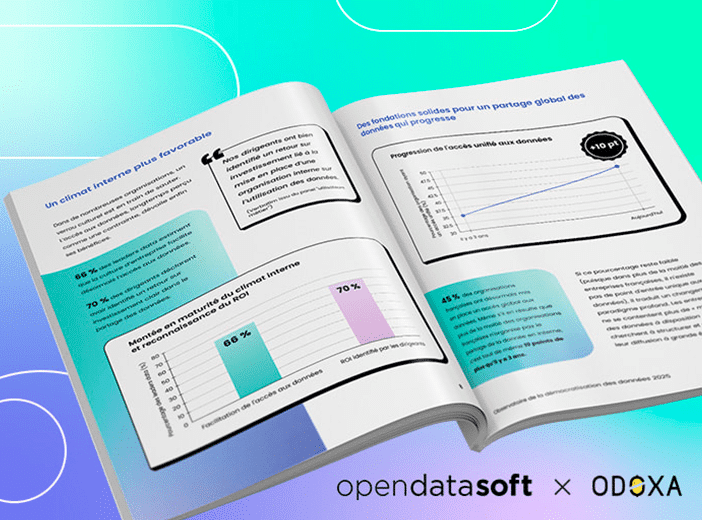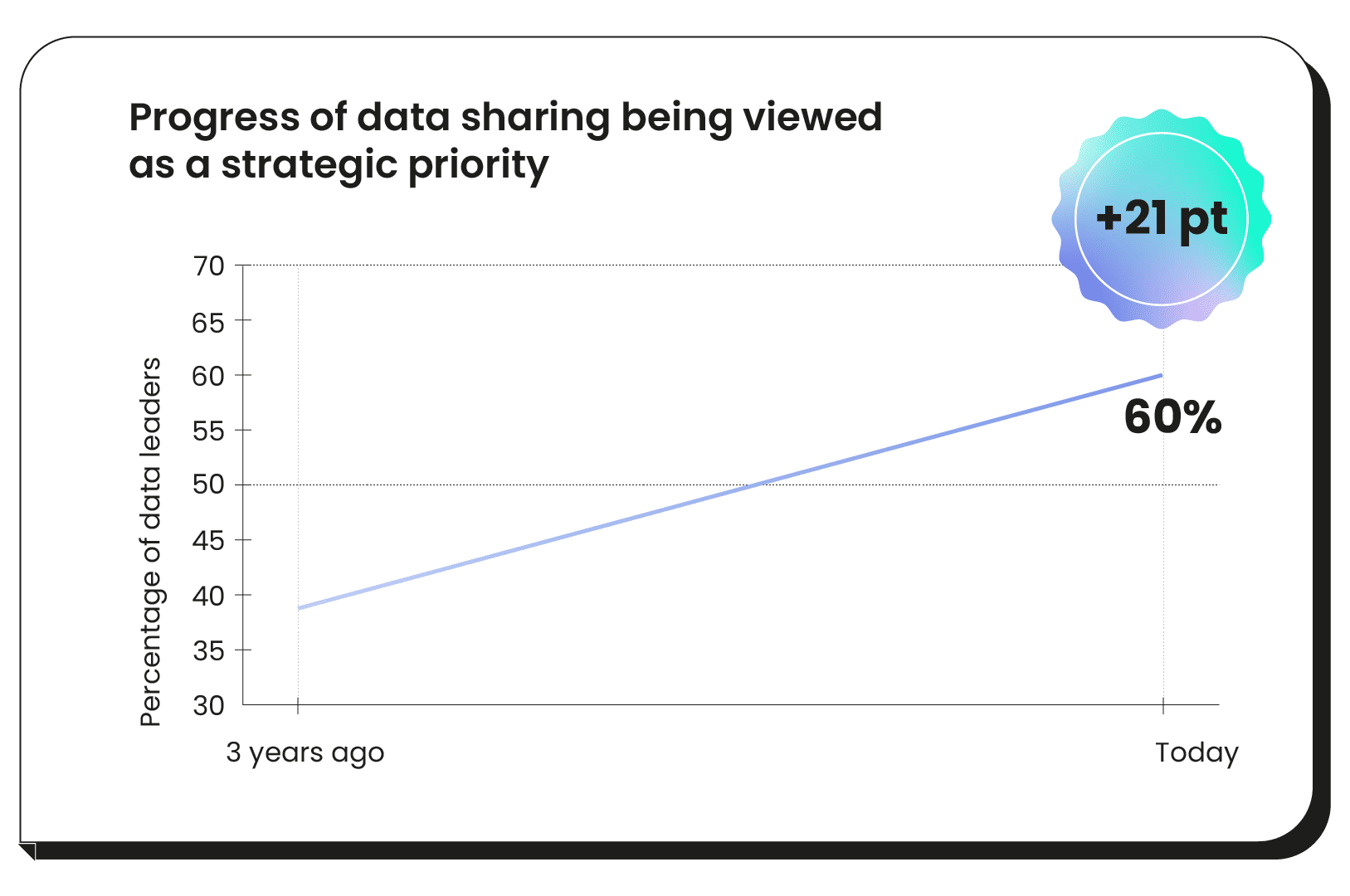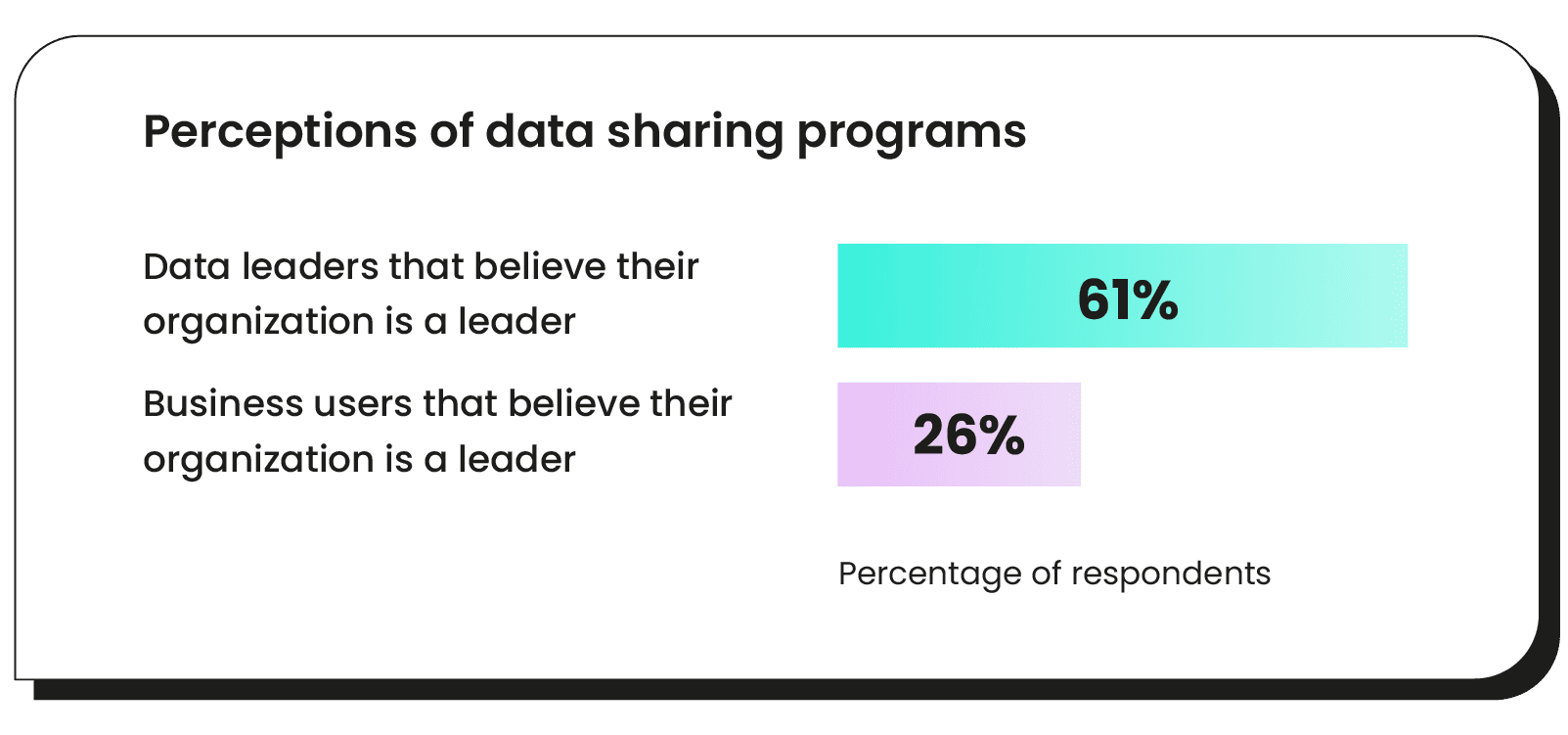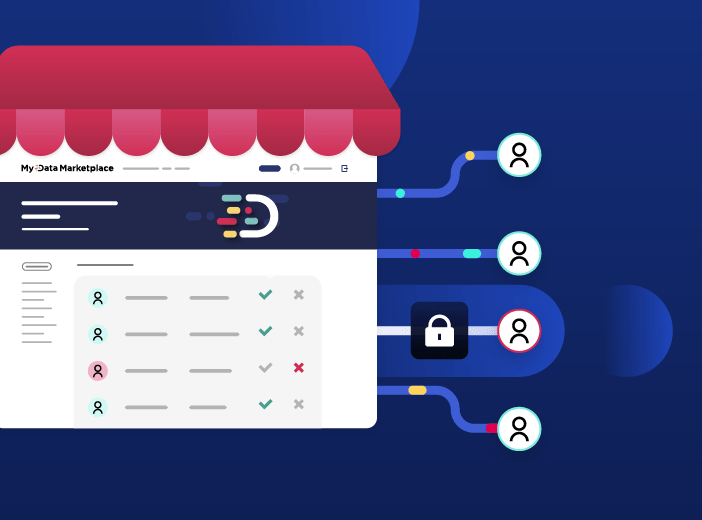The state of data democratization: lessons from our 2025 study

Organizations have never relied so much on data, within their operations, strategies and decision-making. However, our latest research finds gaps between company objectives for data sharing and the reality on the ground.
Data teams believe that the pace of data sharing is accelerating, yet business teams still struggle to harness data and benefit from it. Access is often limited, tools are unsuitable, and governance is not always aligned with data use. All of this means that the time has come to scale up data sharing to create real value and make investments in data profitable.
These are the headline findings of the 2025 Opendatasoft study, created with research organization Odoxa. The study highlights the advances, challenges and the actions required to move data from solely being accessible by experts to democratize it so that it drives value across the entire organization. For the first time, the study interviewed both data leaders (including CDOs, CIOs, and data & analytics managers) and business users. In total, over 850 people were interviewed for the study.
Data sharing: clear ambition but uneven implementation
Organizations are now finally understanding the business benefits of data sharing. 60% of data leaders are making data sharing a strategic priority, a figure that has increased by 21% in three years. Access is growing, data cultures are starting to take root, and investments are being structured around a clear vision of the value that data brings.

However, this momentum is not universal. Only 26% of business users feel they are benefiting from data sharing advances in their working lives. While nearly half of companies (45%) have implemented unified access to data, the majority (55%) are still held back by technical and organizational silos.
The challenge is no longer just to make data available, but to ensure it is being understood and used by the business. Easier access alone is not enough: without the right tools and without data being available through self-service, business users struggles to benefit from it.
The challenge? Moving from data availability to real data use.
How data benefits business users
When easily accessible, data accelerates performance. 84% of business users see a significant efficiency gain when they can access the information they need without having to go through a technical intermediary. Three major benefits stand out:
- Faster decision-making via direct access to key metrics.
- Reduced errors by eliminating manual steps or having to re-enter data multiple times.
- Optimized management that allows proactive, rather than reactive, decision-making.
The lack of the right tools holds back business use of data. Conversely, when a single point of access is in place, organizations see immediate gains. Sales people can identify at-risk customers in real-time and adjust their approach, finance is able to track budget variances live and makes instant corrective decisions, while HR can detect weak signals of employee turnover before they escalate to become a problem. As for data experts, they are no longer swamped by one-off requests for information and can focus on governance and improving data quality.
Clearly, we need to shift from a model where data access is constrained to one where everyone can easily and intuitively find their data they need in order to scale consumption.
Over half of organizations face challenges to delivering an effective data strategy
Data democratization is progressing, but 55% of organizations still don’t have unified access in place. This means that despite growing investment, large-scale data use still faces multiple challenges, namely:
- A lack of strategic mindset: some departments still perceive data as a cost rather than a business advantage.
- Technical fragmentation: silos hinder sharing and prevent smooth data flows.
- Difficulties in measuring ROI: without clear metrics, investment decisions stall and budgets remain low.
A gap between ambition and reality
45% of data leaders see a gap between their high-level objectives and the reality on the ground. Factors such as a lack of funding, lack of training, and overly complex tools all slow down business use of data..
However, the benefits of data sharing are recognized and tangible.
The most advanced organizations are no longer satisfied with simply collecting and storing data. Instead, they are transforming it into a strategic asset, accessible by all, and are focused on using it to improve overall performance.
A perception gap between data leaders and business users

The study highlights a large gap:
- 61% of data leaders consider their company to be a leader in data sharing
- Yet only 26% of business users share this opinion.
Despite this, 64% of business users say they are satisfied with their access to data. This figure indicates that even if the gap exists, data maturity is still progressing within the business.
This is because data leaders believe they have made steps forward in data sharing, even if business users are not yet seeing the benefits in their day-to-day lives. The research found that 30% of respondents have to contact an analyst or data team to access information, which prevents their immediate use of data.
Data culture needs to spread beyond a narrow group of data experts. Without wider ownership and usage of data, democratization will continue to be limited.
The essential role of centralized access
Today, providing access to data is a key requirement. 67% of data leaders plan to implement a data product marketplace to facilitate data sharing at scale. This model centralizes data assets and products, streamlines their discovery and availability, and transforms each dataset into an actionable, ready-to-use product.
Business users are equally convinced of the need for better data availability. 70% of them want simplified, self-service access, without having to rely on technical experts. This demonstrates a major change – data must be immediately available and accessible, without barriers or delays.
In organizations that have reached this data availability milestone, business teams are able to quickly identify useful insights, accelerate decision-making, and free up the time of data experts for higher-value, strategic analysis. There is no need to navigate between multiple tools or make a series of requests to data experts – information flows seamlessly across the organization.
AI and data: 2 inseparable pillars
The rise of generative artificial intelligence (Gen AI) reinforces the urgency of accessing unified, actionable data. 67% of data leaders have made AI one of their priorities for 2025.
Without robust infrastructure and the right governance, AI models and generative tools don’t deliver their full potential. AI models thrive on data: without fluid and structured access to the right information, they can neither learn effectively nor produce relevant results.
Data products are therefore key to AI success – and are equally valuable for business teams, 70% of whom would like to have access to ready-to-use data products. These data products are easily consumable, deliver impact at scale, meet a specific need and are governed by data contracts.
Time is running out for data leaders. To benefit from high-performance AI systems that are aligned with business needs, data must be shared at scale, while respecting governance and security requirements.
4 approaches to democratize data access in 2025
The Odoxa study highlights four strategic approaches that embed data democratization within the organization and its processes.
1. Strengthen governance
70% of data leaders put quality, security, and compliance first. Without a structured framework, information remains fragmented and user trust erodes. Clear governance ensures the reliability of data and its compliant use.
2. Unify access to data
67% of decision-makers plan to deploy a self-service data product marketplace to unify data search, discovery, and consumption. Seamless data access reduces reliance on experts and accelerates decision-making across business teams.
3. Harness AI as a strategic lever
67% of companies are integrating artificial intelligence into their roadmap. Without homogeneous and accessible data, algorithms do not provide reliable results. AI requires rigorous data structures and strengthened governance.
4. Accelerate training and awareness
65% of data leaders identify training and culture as a priority. Developing a shared data culture, from management to operational teams, avoids interpretation bias and promotes the responsible use of information.
The need to move forward with data democratization
Data sharing drives business competitiveness. The results of the Odoxa 2025 survey demonstrate this – companies that have implemented unified data access and in-depth training for business users are already reaping tangible benefits: time savings, better coordination and more informed decision-making.
Yet, the gap between the optimism of data leaders and the expectations of business users underscores that success is as much about technology as it is about change management. The desire to share is growing, but it requires tools that can be used by non-experts, solid governance and a real commitment from top management.

Data contracts are key to building trust in data in distributed environments, and are at the heart of data products. We look at how to build and enforce data contracts through a data product marketplace to unlock greater value from data.

It can be hard to understand exactly what a data product is, given the many ways that the term is defined and applied. To provide clarity this article provides a business-focused definition of a data product, centered on how it makes data accessible and usable by the wider organization, while creating long-term business value.

